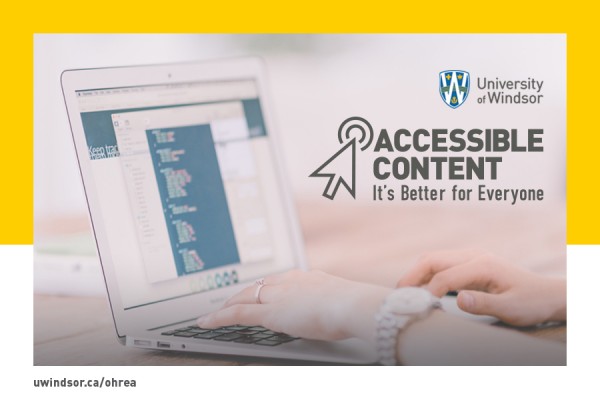 Guides to making content accessible are available for download.
Guides to making content accessible are available for download.
Currently, we are working, learning, and teaching primarily in a virtual world, says Cherie Gagnon.
Accessibility manager in the Office of Human Rights, Equity, and Accessibility, she is distributing a series of quick reference guides to making content accessible to all. The result of collaboration between the accessibility committee and students, they were originally scheduled to be launched during Accessibility Awareness Day, which fell victim to coronavirus precautions.
“Ensuring documents and digital content are accessible helps you to reach your entire audience, which includes people living with disabilities,” Gagnon says. “Accessible formats make content more readable and support the use of adaptive and assistive technology to retrieve information.”
She adds that while embedding accessible elements into communication supports people with disabilities, it’s simply better for everyone.
“Communication is clearer, easier to read, easier to navigate, and more adaptable to various platforms and software,” says Gagnon. “It’s a win all the way around.”
The accessible content cards address:
- social media
- Microsoft Word
- Email/Outlook
- Microsoft Power Point
- Adobe Acrobat
- Microsoft Excel
- print material
They are available for download in portable document format (PDF) from the OHREA website.
